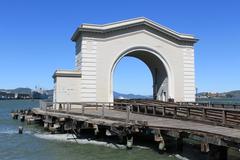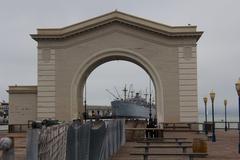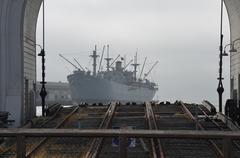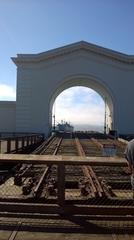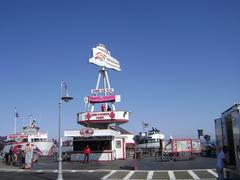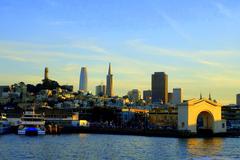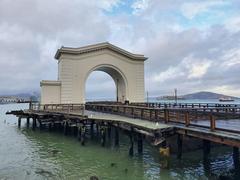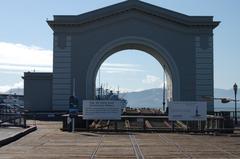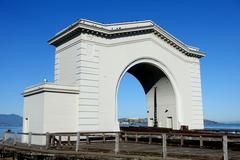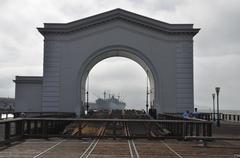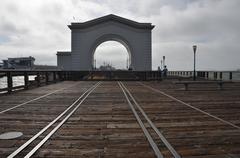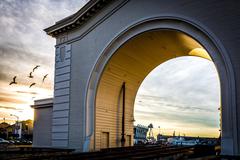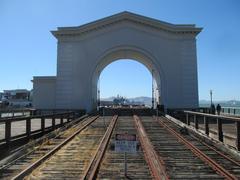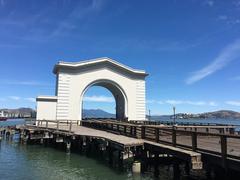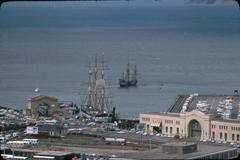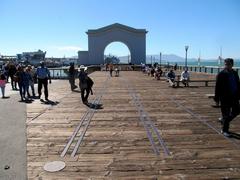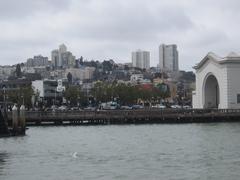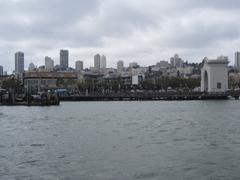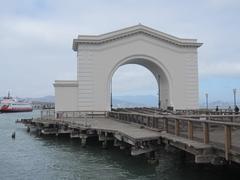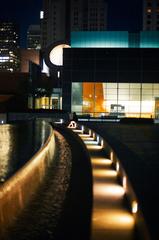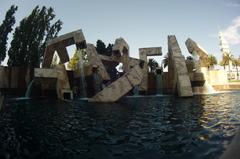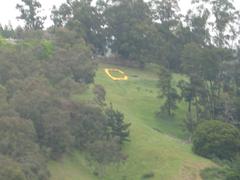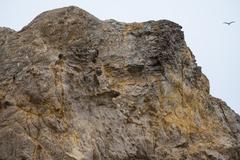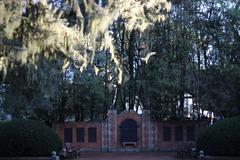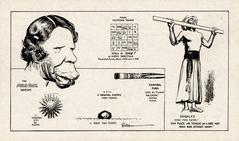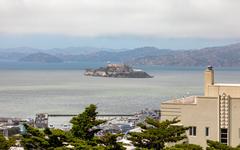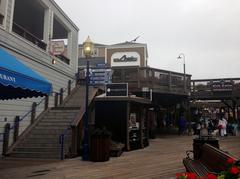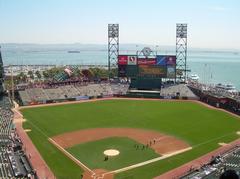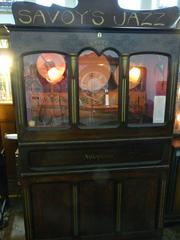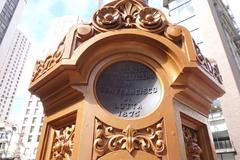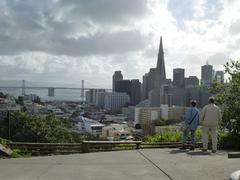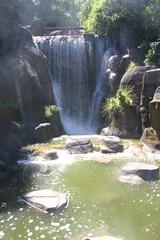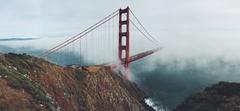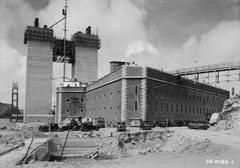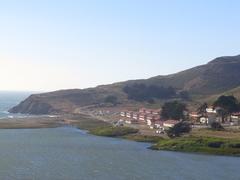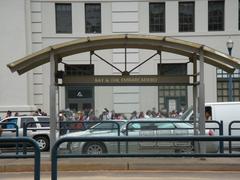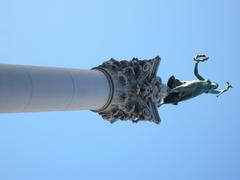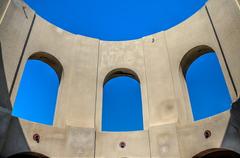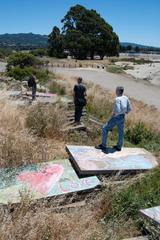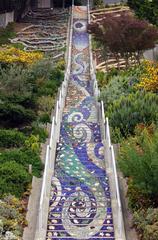
Comprehensive Guide to Visiting Pier 43, San Francisco, United States
Date: 19/07/2024
Introduction
Nestled in the heart of San Francisco’s Fisherman’s Wharf, Pier 43 stands as a living testament to the city’s rich maritime heritage and dynamic evolution. Originally constructed in the early 20th century, the pier was designed to facilitate burgeoning maritime trade and passenger traffic, playing a pivotal role in the economic growth of San Francisco (source). Over the decades, Pier 43’s significance has evolved, from being a bustling hub for cargo and fishing vessels to a strategic military point during World War II. Today, it has been meticulously preserved and transformed into a vibrant tourist destination, attracting millions of visitors each year who are eager to explore its historical landmarks, enjoy scenic cruises, and savor the local culinary delights. This comprehensive guide aims to delve into the intricate history, cultural significance, and modern-day attractions of Pier 43, providing valuable insights and practical information for those planning to visit this iconic landmark.
Table of Contents
- [Exploring the Rich History and Modern Attractions of Pier 43 in San Francisco](#exploring-the-rich-history-and-modern-attractions-of-pier-43-in-san-franciscoexploring-the-rich-history-and-modern-attractions-of-pier-43-in-san-francisco)
- [Early Development and Construction](#early-development-and-constructionearly-development-and-construction)
- [Role in Maritime Commerce](#role-in-maritime-commercerole-in-maritime-commerce)
- [World War II and Military Significance](#world-war-ii-and-military-significanceworld-war-ii-and-military-significance)
- [Post-War Era and Decline](#post-war-era-and-declinepost-war-era-and-decline)
- [Transformation into a Tourist Attraction](#transformation-into-a-tourist-attractiontransformation-into-a-tourist-attraction)
- [Cultural and Historical Significance](#cultural-and-historical-significancecultural-and-historical-significance)
- [Preservation Efforts](#preservation-effortspreservation-efforts)
- [Modern-Day Attractions and Visitor Information](#modern-day-attractions-and-visitor-informationmodern-day-attractions-and-visitor-information)
- [FAQ](#faqfaq)
- [Conclusion](#conclusionconclusion)
- [References](#referencesreferences)
Exploring the Rich History and Modern Attractions of Pier 43 in San Francisco
Early Development and Construction
Pier 43, located in the bustling Fisherman’s Wharf area of San Francisco, has a rich history that dates back to the early 20th century. The pier was constructed as part of a broader initiative to expand San Francisco’s waterfront infrastructure, which was crucial for the city’s economic growth. The construction of Pier 43 began in the early 1900s, with the primary goal of accommodating the increasing maritime traffic and facilitating the efficient handling of cargo.
The pier was designed to be a robust structure, capable of withstanding the harsh maritime conditions of the San Francisco Bay. Its construction involved the use of reinforced concrete and steel, materials that were considered state-of-the-art at the time. The completion of Pier 43 marked a significant milestone in the development of San Francisco’s waterfront, providing a vital link between the city and the maritime industry.
Role in Maritime Commerce
Throughout the early to mid-20th century, Pier 43 played a pivotal role in San Francisco’s maritime commerce. The pier served as a key docking point for cargo ships, fishing vessels, and passenger ferries. It was a bustling hub of activity, with goods being loaded and unloaded, and passengers embarking on journeys across the bay.
The strategic location of Pier 43 made it an ideal spot for the fishing industry, which was a major economic driver for San Francisco. Fishermen would bring their daily catch to the pier, where it would be processed and distributed to markets across the city. The pier also facilitated the export of goods, including agricultural products from California’s fertile Central Valley, to international markets.
World War II and Military Significance
During World War II, Pier 43 took on a new level of significance as part of the United States’ war effort. The pier was utilized by the military for the transportation of troops and supplies. San Francisco’s strategic location on the West Coast made it a critical point for the deployment of military personnel and equipment to the Pacific Theater.
The pier was bustling with activity as soldiers prepared to embark on their journeys, and supplies were loaded onto ships bound for various destinations. The role of Pier 43 during this period underscored its importance not only to the local economy but also to national security.
Post-War Era and Decline
Following the end of World War II, Pier 43 continued to serve as a vital component of San Francisco’s maritime infrastructure. However, the post-war era brought significant changes to the shipping industry. The advent of containerization and the development of larger, more modern ports led to a decline in the use of traditional piers like Pier 43.
By the 1960s and 1970s, the pier saw a reduction in commercial maritime activity. The decline was further exacerbated by the shift in the fishing industry, with many operations moving to more modern facilities. Despite these challenges, Pier 43 remained a symbol of San Francisco’s rich maritime heritage.
Transformation into a Tourist Attraction
Recognizing the historical and cultural significance of Pier 43, efforts were made to preserve and repurpose the pier as a tourist attraction. The transformation began in the late 20th century, with the goal of revitalizing the area and attracting visitors to Fisherman’s Wharf.
Today, Pier 43 is a popular destination for tourists, offering a glimpse into San Francisco’s maritime past. The pier is home to various attractions, including the Pier 43 Ferry Arch, a historic landmark that once served as the gateway for ferries traveling across the bay. The arch has been preserved and restored, serving as a reminder of the pier’s storied history.
Cultural and Historical Significance
Pier 43 holds a special place in the cultural and historical fabric of San Francisco. It stands as a testament to the city’s maritime heritage and its evolution over the past century. The pier’s transformation from a bustling commercial hub to a beloved tourist attraction reflects the broader changes that have shaped San Francisco’s waterfront.
Visitors to Pier 43 can explore the rich history of the area through various exhibits and informational displays. The pier offers a unique opportunity to learn about the maritime industry, the role of the pier during World War II, and the efforts to preserve this important piece of San Francisco’s history.
Preservation Efforts
The preservation of Pier 43 has been a collaborative effort involving various stakeholders, including local government agencies, historical societies, and community organizations. These efforts have focused on maintaining the structural integrity of the pier, as well as preserving its historical features.
One notable preservation project is the restoration of the Pier 43 Ferry Arch. This project involved extensive work to repair and stabilize the arch, ensuring that it remains a prominent landmark for future generations. The restoration efforts have been supported by grants and donations from individuals and organizations committed to preserving San Francisco’s maritime heritage.
Modern-Day Attractions and Visitor Information
Today, Pier 43 is a vibrant part of the Fisherman’s Wharf area, attracting millions of visitors each year. The pier offers a variety of attractions and activities, including boat tours, dining options, and shopping. Visitors can take a scenic cruise around the bay, enjoy fresh seafood at one of the many restaurants, or browse the unique shops and boutiques.
Visiting Hours and Tickets
Pier 43 is open to visitors daily from 9:00 AM to 8:00 PM. Some attractions may have specific operating hours, so it’s recommended to check in advance. Tickets for boat tours and other activities can be purchased on-site or online through various vendors.
Special Events and Guided Tours
Pier 43 hosts special events throughout the year, including historical tours, festivals, and cultural celebrations. Guided tours are available and provide an in-depth look at the history and significance of the pier. These tours often include access to areas not typically open to the public.
Nearby Attractions
The Fisherman’s Wharf area offers a plethora of attractions within walking distance of Pier 43. Popular nearby sites include Ghirardelli Square, the San Francisco Maritime National Historical Park, and the famous sea lions at Pier 39.
Travel Tips and Accessibility
Pier 43 is easily accessible by public transportation, including the historic F-line streetcar. Parking is available in nearby lots, but it can be limited during peak times. The pier is wheelchair accessible, with ramps and facilities to accommodate visitors with mobility needs.
Photographic Spots
Pier 43 offers several picturesque spots perfect for photography. The Pier 43 Ferry Arch is a favorite backdrop for photos, and the views of the bay and city skyline are stunning, especially at sunset.
FAQ
What are the opening hours of Pier 43?
Pier 43 is open daily from 9:00 AM to 8:00 PM.
How do I get tickets for Pier 43 attractions?
Tickets can be purchased on-site or online through various vendors.
What are some nearby attractions?
Nearby attractions include Ghirardelli Square, the San Francisco Maritime National Historical Park, and the sea lions at Pier 39.
Is Pier 43 accessible for visitors with disabilities?
Yes, Pier 43 is wheelchair accessible and has facilities to accommodate visitors with mobility needs.
Conclusion
Pier 43’s rich history and cultural significance make it an integral part of San Francisco’s waterfront. From its early days as a bustling commercial hub to its transformation into a beloved tourist attraction, the pier has played a vital role in the city’s development. Visitors to Pier 43 can immerse themselves in the maritime heritage of San Francisco, exploring the historical landmarks and enjoying the vibrant atmosphere of Fisherman’s Wharf.
For more information and updates, download the Audiala mobile app or follow us on social media.

